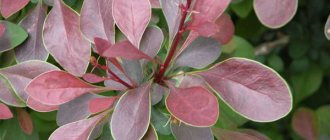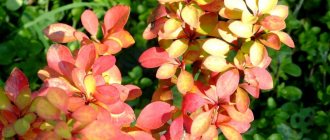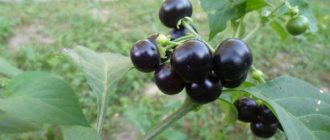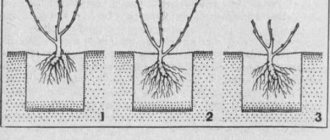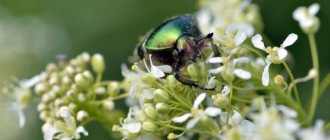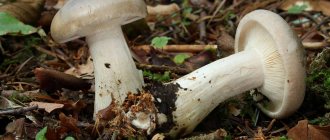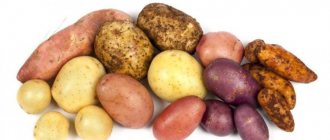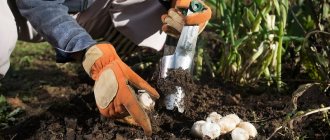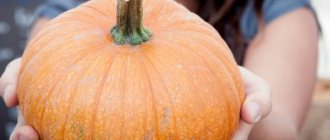Loading…
Loading…
An unpretentious shrub, native to Asia Minor, barberry today grows wild in the countries of Central and Southern Europe and North Africa, the Middle East and the Caucasus, Afghanistan, Pakistan and India. It was here that the bush began to be grown as a cultivated plant and turned into a source of an irreplaceable spice - dried sour berries, which from time immemorial have improved the taste of meat dishes and were used to make thirst-quenching drinks.
The fruits of barberry, which remain on the branches of the bush from autumn to spring and do not lose their beneficial properties even in the most severe frosts, are rightfully considered in the East as a symbol of longevity and endurance.
Since ancient times, Arab and Indian healers used barberry to treat diseases of internal organs; the berries were used as a wound-healing and disinfectant drug. Barberry preparations for the winter fully retain the active substances contained in the berries.
Collection time and composition of barberry berries
Modern studies of the composition of barberry fruits have confirmed the value of natural raw materials as a medicinal and vitamin product.
One hundred grams of barberry berries, in addition to thirty calories, contain vitamins C and E, beta-carotene and anthocyanins, pectins, tannins and organic acids. But all these natural resources can only be beneficial when consuming ripe berries, since unripe fruits contain a toxic concentration of berberine alkaloid, which is toxic to the body. Not only has barberry become a spectacular decoration for garden plots and park areas, its fruits are a godsend for chefs. What can be made from barberry so that its beneficial qualities can be used in winter?
Spicy sauces, marmalades and jams are prepared from fresh berries; original liqueurs and tinctures, jams and seasonings for meat and cereal dishes are made from barberry.
It is not without reason that in the East there is an opinion that pilaf becomes so when purple barberry berries fall into it. The time to collect sour, spicy berries comes only in late autumn, when the content of vitamins, minerals and other substances beneficial to humans becomes maximum. At the same time, there is no point in postponing harvesting, because with the first serious frost the fruits soften and it becomes more difficult to preserve them.
Benefits and possible harm
Dried barberry berries have long been known to traditional healers for their medicinal properties.
Among them are the following:
- cleanses the body, eliminates excess sugar and cholesterol in the blood;
- eliminates foci of inflammation;
- strengthens the immune system;
- soothes pain, relieves swelling;
- gently lowers blood pressure;
- exhibits a diuretic and diaphoretic effect;
- normalizes the functioning of the stomach and intestines;
- cleanses and strengthens the liver;
- has a choleretic effect;
- prevents inflammatory processes in the oral cavity.
In cosmetology, the product is known for its use as a whitening and rejuvenating agent for facial skin. A decoction based on dried fruits and leaves of the plant can strengthen and nourish hair with vitamins, relieve brittle nails, and tighten the skin.
To strengthen and rejuvenate the body, and prevent the occurrence of many diseases, it is recommended to eat 10-20 g of dried fruits per day or take 1 cup of barberry tea.
It is believed that dried barberry is a suitable remedy for weight loss. The cleansing properties of the plant facilitate the process of losing excess weight, but do not burn fat directly. Also, its low calorie content (29 kcal per 100 g) allows the product to be included in dietary desserts, marinades, and side dishes.
There is a misconception that barberry and goji berries are the same thing. These are plants of the same genus, but with significant differences. The abundance of alkaloids in young goji berries makes the fruit poisonous, so they can only be consumed dried. Unripe barberry is also dangerous to health, but ripe fruits can be eaten fresh. There are also external differences:
| Barberry | Goji berries | |
| Fruit shape | Oblong, smooth | Oblong, teardrop-shaped |
| Color | Dark red, burgundy | Carrot red |
| Taste | Sourish, with sweet notes | Sweet, with sour notes |
| Price | Higher | Below |
If you choose what to buy - goji berries or barberries - it is important to remember that the first product exhibits powerful cleansing properties, the second - strengthening and nourishing.
It is also important to remember what a barberry tree and its fruits look like, so as not to acquire goji berries or dogwood, which also have similar external features.
Contraindications for use:
- period of pregnancy and lactation;
- use of sedatives;
- diabetes;
- hepatitis, cholelithiasis, cirrhosis;
- early age (up to 12 years).
Unripe berries can cause significant harm. Side effects from eating such fruits manifest themselves in the form of vomiting, stool disorders, high fever and other signs of intoxication.
Unregulated use of dried barberry may develop into an allergy or individual intolerance to the product.
How to dry barberry at home?
The most popular way to harvest barberry for the winter is to dry the fruit. It can be done in the fresh air, in a household oven or in a special dryer for vegetables and fruits. Before drying barberries, after picking, ripe berries are sorted, cleared of damaged fruits and foreign inclusions, washed and thoroughly dried on clean napkins, and then laid out on sieves, trays or baking sheets:
- If barberry is dried in an oven or a special dryer, the plant material at the first stage should not be heated above 50 ºC. When the berry stops producing juice, the temperature in the chamber is increased to 60 ºC.
- It is better to cover barberries left to dry in the fresh air with gauze or fine mesh to protect them from wind, birds and insects. The berries should not be exposed to direct sunlight.
The fruits must be turned during drying, trying not to damage the berries and preventing them from sticking together.
The end of the process is determined by squeezing a handful of berries in the palm of your hand. If the barberry remains crumbly, does not choke and does not leave traces of juice on the palms, drying is completed, and the cooled fruits are poured into clean, dry containers equipped with tight lids. High-quality dried barberry, as in the photo, can be distinguished by:
- pleasant, characteristic smell of the culture;
- uniform purple color, without darkening, traces of mold, burning and dirt;
- glossy dense surface.
Dried berries can be stored for up to a year and serve not only to flavor dishes and drinks, but also for health.
Is it possible to prepare barberry for the winter in other ways? Of course, a lot of different preparations will help replenish the diet during the cold season. An example is a sterilized berry, without any additives or processing. If clean, dry berries are tightly placed in glass jars, sterilized and closed, the barberry remains almost fresh and can later be used both as a seasoning and for making independent dishes.
Barberry juice, jelly and marmalade
From barberry you can make a concentrate for making compotes, juice, jelly and fruit drinks. To do this, berries, cleared of leaves, twigs and other impurities, are poured with a small amount of water so that it covers the layer of barberry. After this, the container with the fruits is placed on the fire, brought to a boil and the softened barberry is passed through a press. The resulting juice can be poured into clean containers, sterilized and used during the winter to acidify marinades and sauces.
When interested in what can be made from barberry berries, do not forget that after adding a certain amount of sugar to the concentrated juice, it becomes an excellent base for jelly, compotes and other drinks. If you add 750 to 1000 grams of sugar per kilogram of already pureed berries or juice and boil the composition, the natural pectins in barberry will turn the cooled mass into marmalade or homemade jelly.
Barberry jam for the winter
Unlike barberry jelly for the winter and preparation for juice, jam from the sour berries of this shrub does not need to be ground or pressed. For 1 kg of berries take 1.5 kg of sugar and the same amount of water:
- The fruits are sorted and washed, and then poured with water so that the skin softens and the berries begin to produce juice.
- After 8–10 hours, the barberry is poured with sugar syrup and placed on low heat.
- After 30–40 minutes of cooking, the berries become soft, and when the syrup leaves a round drop on the saucer, the jam is removed from the heat, poured into jars and stored in a cool place.
Barberry in winter (jam): recipe for making barberry jam
Ingredients:
Preparation:
Rinse the barberry. Place in a suitable container and fill with water until the berries are lightly covered. Cook the barberry until the skin bursts. Strain the juice and squeeze the pulp through cheesecloth in several layers. Add sugar to the juice in a 1x1 ratio and cook until the mixture thickens. Transfer to sterilized jars and seal. Barberry in winter is an excellent remedy for colds. All barberry preparations can be stored at room temperature in winter. Read about other winter preparations.
Barberry jam - video of preparations for the winter
An unpretentious shrub, native to Asia Minor, barberry today grows wild in the countries of Central and Southern Europe and North Africa, the Middle East and the Caucasus, Afghanistan, Pakistan and India. It was here that the bush began to be grown as a cultivated plant and turned into a source of an irreplaceable spice - dried sour berries, which from time immemorial have improved the taste of meat dishes and were used to make thirst-quenching drinks.
The fruits of barberry, which remain on the branches of the bush from autumn to spring and do not lose their beneficial properties even in the most severe frosts, are rightfully considered in the East as a symbol of longevity and endurance.
Since ancient times, Arab and Indian healers used barberry to treat diseases of internal organs; the berries were used as a wound-healing and disinfectant drug. Barberry preparations for the winter fully retain the active substances contained in the berries.
Unusual barberry preparations for the winter: pickles and sauce for meat dishes
To pickle barberry berries, you need a liter of water and 120–150 grams of salt per kilogram of fruit. If desired, you can add spicy herbs to the brine, for example, rosemary, basil or oregano, or you can put oriental spices such as cinnamon, cardamom and pepper in the basil preparation for the winter. Clean, dried fruits are placed tightly in jars and filled with chilled brine. After sterilization, the original dressing for poultry or game dishes can be stored in the cold all winter. What else can be made from barberry?
A sauce made from sour fruits will help gourmets in their own kitchen feel like they are in India or North Africa. This is a great addition to rice, couscous and roast duck.
For a kilogram of peeled barberry berries you will need 250 grams. First, the fruits, drenched in water, are boiled until softened, ground, freeing them from seeds and dense particles of the peel, and then sugar is added to the puree and brought to a boil. Now it’s time to add real oriental spices: cloves, grated ginger, cinnamon and ground pepper, as well as other spices of your personal choice. The sauce is removed from the heat when it becomes thicker, but does not lose its original bright color and aroma. After pouring the product into glass containers, the sauce must be sterilized and closed.
Alcohol and wine tinctures are also prepared based on barberry.
But not only berries are beneficial. The roots and leaves of this amazing plant are also useful, so this kind of barberry raw material is worthy of being prepared for the winter.
Harvesting barberry leaves and rhizomes for the winter
The leaves, in addition to almost all the components found in barberry fruits, are rich in essential oils and resinous substances. The roots of the bush and even barberry bark are used in folk medicine. What can be made from barberry leaves? Such raw materials are dried in order to be used during the pickling of cucumbers, squash and tomatoes during the summer and autumn. Along with dried berries, crushed leaves can be added as a seasoning for baked meat.
But if the berry picking time is the middle or second half of autumn, then the leaves accumulate the greatest amount of valuable substances in May or June. The best raw materials are young shoots, about 10 cm long, and the foliage on them. How to dry barberry leaves in a dryer and oven? The collected raw materials are washed, dried, blotted with a napkin, and laid out in a thin layer on baking sheets. When drying in the oven, the temperature should not exceed 45–50 ºC.
If barberry is prepared correctly for the winter, the leaves, roots and fruits do not darken and retain all their beneficial properties.
It is more convenient to dry the leaves in the fresh air in small bunches, covered with gauze and located in a ventilated place, protected from sunlight. The raw materials spend 5–7 days in such conditions, after which the leaves are ready for consumption and storage in paper bags or closed glass containers. Similarly, barberry roots are dried, harvested for the winter in late autumn and taken from adult bushes that can tolerate the loss of a small part of the root system. The raw materials are cleaned of soil, damaged areas and small, thread-like rhizomes, and then dried. A quality product used for medicinal purposes should be light yellow or cream when cut.
What is prepared from barberry
Hippocrates also said that food should be medicine, and medicine should be food. This is exactly the exact definition of berries, flowers, branches, bark and roots of barberry. Anything that can be prepared from it will have healing properties.
Berries are the most popular in culinary and medicinal recipes.
This plant contains many useful substances. Its healing qualities are explained by the presence in all its parts, except for the ripe berries, of the alkaloid berberine, which is used in medicine. The roots of the plant contain alkaloids palmitine, oxyacanthin, etc. The bark of the trunks and branches contain tannins and resins. The leaves contain valuable vitamin K. Ripe fruits have more carotene and vitamin A than carrots. They contain sugars, pectin, organic acids and ash.
Preparations prepared from barberry destroy and remove toxic substances and poisons from the human body. The plant has bactericidal, anthelmintic, antiamoebic and laxative properties. This remedy cleanses the liver, gall bladder and regulates their functions.
Many people are interested in what can be prepared from barberry. Berries are strong antibiotics. To prevent various diseases, infusions, teas should be prepared from them, and added in powder form to soups, meat and fish dishes.
In modern medicine, an alcoholic tincture of the leaves is used in gynecology as a hemostatic agent. In folk medicine, an infusion of leaves is used to treat female diseases with heavy bleeding: menstrual irregularities, fibroids.
Infusions, decoctions of branches and berries, which have phytoncidal properties, are used to cleanse the body of bioaggressors. The bark of the plant in the form of a thick decoction is used for rheumatism. The berries and bark are used in the treatment of diabetes.
The high content of vitamin C in ripe berries of the plant strengthens the immune system and resists infectious diseases, especially influenza. The use of barberry extracts relieves spasms in the bronchi, runny nose and sore throat. Their antibacterial and antifungal properties are used in the treatment of genitourinary tract infections, candidiasis, and fungal skin diseases.
If you have a strong heartbeat or pain in the heart, you should eat ripe berries in the first autumn month.
We recommend that you familiarize yourself with Raspberry Glen Ampl
With the help of fruit decoctions, you can stop binge drinking among alcohol lovers. In the East, the roots were used for malignant tumors.
Barberry tea should be brewed only in a ceramic teapot. 1 tsp dried berries should be poured with a glass of boiling water, leave for 10 minutes and strain. You should drink it warm after eating. You can add dried barberry fruits to black tea instead of lemon.
To treat colds with elevated temperatures, you can prepare a drink from barberry. 1 tbsp. Boil dry fruits in 0.5 liters of water over low heat for 10 minutes. Leave the broth in a thermos for 2 hours, strain, add a little vanilla and honey.
To cleanse the blood and lymph, prepare a decoction of 100 g of berries, poured with 0.5 liters of boiling water. After boiling over low heat for 20 minutes, add boiling water to the original volume, pour into a thermos and leave for 4 hours. Strain and add another 0.5 liters of water. Drink a quarter glass after meals for 21 days.
You can also make tea from 1 tsp. apical leaves of barberry, poured a glass of boiling water and infused for 10 minutes.
Ripe berries can be added to compotes and refreshing summer drinks. In hot weather, they quench thirst well and serve as a preventive measure for intestinal diseases.
At the beginning of summer, when there are still few vitamins, young leaves of the plant are added to salads and soups.
Wise women planted barberries near their houses so that the family would have prosperity. And when autumn came and the berries ripened, they brought the branches into the house and made bouquets out of them.
